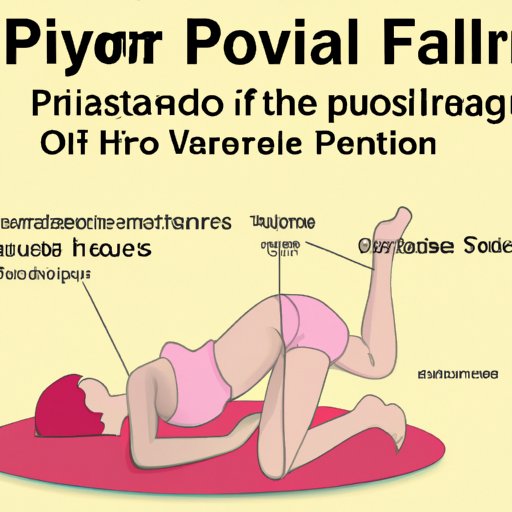Introduction
Pelvic floor exercises, also known as Kegel exercises, are simple movements that strengthen the muscles of the pelvic floor. These muscles support your bladder, bowels, and uterus and can be weakened by childbirth, age, or being overweight. Strengthening these muscles can help improve bladder control, reduce the risk of pelvic organ prolapse, and even improve sexual function.

How to Locate and Activate Your Pelvic Floor Muscles
The first step in doing pelvic floor exercises is to identify and isolate the correct muscles. To do this, imagine you’re trying to stop yourself from urinating or having a bowel movement. The muscles you use to do this are your pelvic floor muscles. Contracting and releasing these muscles regularly is the basis of pelvic floor exercises.

An Overview of Different Pelvic Floor Exercise Techniques
Once you’ve identified your pelvic floor muscles, there are various techniques you can use to exercise them. The most common technique is known as Kegel exercises. This involves repeatedly contracting and releasing the muscles for 10 seconds at a time. Other exercises include squeeze and release, bridge, wall squats, planks, and clamshells. Each exercise works the muscles in a slightly different way, so it’s important to incorporate a variety of exercises into your workout routine.

Tips for Making Pelvic Floor Exercises Easier
If you’re new to pelvic floor exercises, it can be difficult to know if you’re doing them correctly. Here are some tips to make sure you’re getting the most out of your workouts:
- Start slowly: Don’t try to do too many repetitions at once. Start with just a few and gradually increase the number as you become more comfortable.
- Use visualization: Visualizing your pelvic floor muscles contracting and releasing can help you focus on the correct muscles.
- Make sure you’re doing it right: It’s important to make sure you’re engaging the correct muscles. If you’re not sure, consult your doctor or physical therapist.
A Guide to Incorporating Pelvic Floor Exercises into Your Workout Routine
Incorporating pelvic floor exercises into your regular workout routine is key to seeing results. Here are some tips to help you get started:
- Frequency: Aim to do pelvic floor exercises every day. Doing them more often can help you see results faster.
- Time commitment: You don’t need to spend hours doing pelvic floor exercises. Just a few minutes a day can make a big difference.
- Variety: Mix up your routine by incorporating different types of exercises. This will help keep your workouts interesting and effective.
The Impact of Pelvic Floor Exercises on Women’s Health
Pelvic floor exercises can have a huge impact on women’s health. Here are some of the benefits you may experience from doing these exercises regularly:
- Improved bladder control: Strengthening the pelvic floor muscles can help improve bladder control and reduce the risk of urinary incontinence.
- Reduced risk of pelvic organ prolapse: Pelvic floor exercises can help reduce the risk of pelvic organ prolapse, which is when the organs of the pelvic floor weaken and drop down into the vagina.
- Improved sexual function: Pelvic floor exercises can help improve sexual function by increasing blood flow to the area, leading to stronger orgasms and improved sensation.
Conclusion
Pelvic floor exercises are a great way to improve your overall health and well-being. They can help improve bladder control, reduce the risk of pelvic organ prolapse, and improve sexual function. By incorporating them into your regular workout routine, you can start to see results in no time.
To get the most out of your pelvic floor exercises, it’s important to start slowly and make sure you’re engaging the correct muscles. With consistency and dedication, you can enjoy all the amazing benefits these exercises have to offer.
(Note: Is this article not meeting your expectations? Do you have knowledge or insights to share? Unlock new opportunities and expand your reach by joining our authors team. Click Registration to join us and share your expertise with our readers.)
